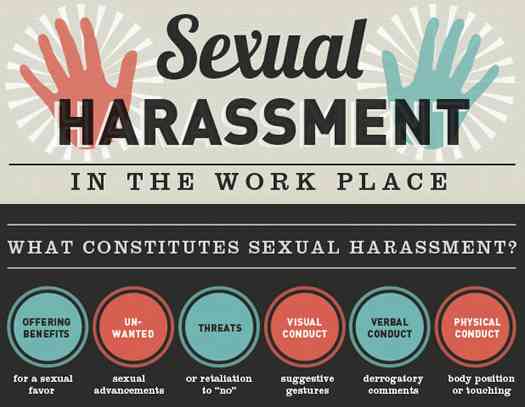a semantic perspective.
SEXUAL HARASSMENT

by
HOWARD RICHLER
___________________________
Howard
Richler is a Montreal-area word nerd and author of these seven
books on a variety of language themes: Dead Sea Scroll Palindromes,
Take My Words, A Bawdy Language, Global Mother Tongue, Can I
Have a Word With You?, Strange Bedfellows and his most
recent book Wordplay:
Arranged and Deranged Wit ( May 2016, Ronsdale
Press, Vancouver).
Alas, the year 2017 was marked by words that denote
the ill-treatment of women by men. Following the revelations of
the behaviour of Harvey Weinstein and his predatory ilk, the adjective
‘inappropriate’ saw a large spike in usage. People
soon realized that this word, often applied to the misbehaviour
of a child, wasn’t quite suitable to describe the level
of misdeeds. Before long stronger terms such as ‘abuse’
and ‘harassment’ became the most common used descriptions.
And if one considers it as a word, the hashtag #MeToo became a
rallying cry from many women to describe their own similar experiences
of sexual harassment.
 Underscoring
this lexical recognition of the plight of women, Merriam-Webster
named the word ‘feminism’ as its word of the year
for 2017 and stated that it was the most searched-for-word in
its online dictionary, showing a 70% increase from 2016. Also,
the word ‘persisterhood,’ defined as women who join
forces to persist against sexism and gender bias, was nominated
as one of the words of the year of 2017 by the American Dialect
Society. (The winner was ‘fake news.’) Also,
highlighting how the issue of sexual harassment marked 2017, Time
magazine declared that its ‘person of the year’
were the Silence
Breakers: The Voices that Launched a Movement.
The magazine’s cover featured Ashley
Judd, Susan Fowler, Adama Iwu, Taylor Swift, and
Isabel Pascual who were among the many women who went public in
describing their painful encounters with sexual predation.
Underscoring
this lexical recognition of the plight of women, Merriam-Webster
named the word ‘feminism’ as its word of the year
for 2017 and stated that it was the most searched-for-word in
its online dictionary, showing a 70% increase from 2016. Also,
the word ‘persisterhood,’ defined as women who join
forces to persist against sexism and gender bias, was nominated
as one of the words of the year of 2017 by the American Dialect
Society. (The winner was ‘fake news.’) Also,
highlighting how the issue of sexual harassment marked 2017, Time
magazine declared that its ‘person of the year’
were the Silence
Breakers: The Voices that Launched a Movement.
The magazine’s cover featured Ashley
Judd, Susan Fowler, Adama Iwu, Taylor Swift, and
Isabel Pascual who were among the many women who went public in
describing their painful encounters with sexual predation.
Writing
in 1991, Rosalie Maggio in the Dictionary of Bias-Free Usage
remarked that “sexual harassment was not a term anyone used
20 years ago; today we have laws against it.” Actually,
it was exactly twenty years earlier that we find the first citation
of sexual harassment in the OED, and it comes from the
Yale Daily News of April 19, 1971: “We insist . . .
that sexual harassment is an integral component of discrimination.
Men perceive women in sexual categories and not in professional
categories.” 
The OED defines the term as “harassment (typically
of a woman by a man) in a work place or other
professional or social situations involving the making of unwanted
sexual advances obscene remarks, etc.” Maggio’s point
was that while sexual harassment obviously occurred prior to 1971,
its lexical recognition gave it greater force to be countered
by laws or social norms. Before long sexual harassment was recognized
as a phenomenon in the legal arena. In 1986, the Supreme Court
of the United States ruled that employers could not permit an
employee to create a hostile work environment for someone else
or base advancement on a quid pro quo for sex. In 1989,
the Supreme Court in Canada ordained that sexual harassment represented
sexual discrimination and thus could not be tolerated.
Most
academic institutions have definitions of sexual harassment and
invariably they contain hard to define adjectives such as ‘unwanted,’
‘unwelcome,’ ‘vexatious’ and ‘obscene.’
Adjectives by definition are descriptive and depend largely on
a consensus of a shared reality which unfortunately does not exist
in analyzing sexual harassment. For what is deemed unwanted or
unwelcome by one person may be wanted or welcome to another. Also,
what qualifies as an obscene comment or joke can be highly subjective.
One definition of sexual harassment includes the phrase “verbal
or physical conduct of a sexual nature that tends to create a
hostile or offensive work environment.” Again, we’re
dealing with thorny adjectives such as ‘hostile’ and
‘offensive.’ Almost everyone, male or female, accepts
that sexual favours can’t be a condition for a job or promotion.
Large majorities consider unwelcome touching as improper but often
women and men disagree on what constitutes sexual harassment,
such as what counts as sexualized remarks or what qualifies ogling.’
And although younger men’s attitudes approximate those of
women to a much larger extent than older males, the gap in the
positions of the sexes endures.
It
is also important to register that there is a hierarchy of offenses
related to the term sexual harassment. When actor Matt Damon in
an interview with Peter Travers of ABC Television, stated “there’s
a difference between patting someone on the butt and rape or child
molestation, right? Both of those behaviours need to be confronted
and eradicated without question, but they shouldn’t be conflated,
right?” Those comments were met with anger and frustration
online, where many women, including the actress Alyssa Milano,
rejected attempts to categorize various forms of sexual misconduct.
After Damon’s interview, Milano wrote on Twitter: “They
are all connected to a patriarchy intertwined with normalized,
accepted -- even welcomed -- misogyny.” In a panel discussion
of seven feminists in the New York Times on sexual harassment,
broadcast journalist Soledad O’Brien came down squarely
on Damon’s side in this dispute referencing the various
meanings of the term: “I think we conflate the many different
definitions of sexual harassment -- the legal definition, someone’s
personal interpretation. Some things are legally a crime. Other
actions would clearly violate a company’s standards, inappropriate
language, physically grabbing a woman, pressuring an underling
for sex. They are all bad and should be stopped, but I think they
deserve different levels of punishment.”
Interestingly,
on some university campuses the term ‘affirmative consent’
has gained currency. It postulates that at every stage of a relationship
there should be a verbal agreement but, as Daphne Merkin points
out in a Jan 5, 2018 article in the New York Times, “asking
for oral consent before proceeding with a sexual advance seems
both innately clumsy and retrograde.” And so the debate
on what constitutes sexual harassment and how to combat it rages
on.